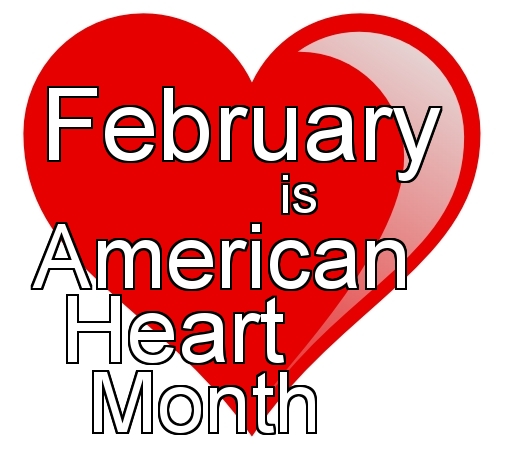Sore Gums, Puffy Feet and Other Important Warning Signs of Heart Disease
 The human heart, the size of a fist and the strongest muscle in the human body, beats about 100,000 times a day or about 2.5 billion times over a 70 year lifetime. With each beat, blood is pumped from the left chambers of the heart throughout the body, delivering oxygen and nutrients, and collecting waste products, then returning to the right chambers of the heart. Waste products are removed as the blood circulates through the liver.
The human heart, the size of a fist and the strongest muscle in the human body, beats about 100,000 times a day or about 2.5 billion times over a 70 year lifetime. With each beat, blood is pumped from the left chambers of the heart throughout the body, delivering oxygen and nutrients, and collecting waste products, then returning to the right chambers of the heart. Waste products are removed as the blood circulates through the liver.
Cardiovascular disease (CVD), which includes heart disease, stroke and high blood pressure, is the leading cause of death for men and women in America. Someone dies from it every 39 seconds in the US. CVD is responsible for more deaths in America than cancer, chronic lower respiratory (lung) disease and accidents combined. It is the leading cause of disability preventing Americans from working, and among the most widespread and costly health problem facing our nation.
Many of the problems are related to atherosclerosis, a buildup of plaque that narrows the vessels, making it harder for blood to flow through. CVD is among the most preventable of diseases. Here are the early warning signs of CVD:
- Sore, swollen or bleeding gums - Inflammation is a common thread between gum disease and heart disease, diabetes, and other chronic conditions. Researchers also are trying to determine if common bacteria are involved in both gum disease and plaque buildup inside the coronary arteries.
- Puffy or swollen feet - There may be problems with fluid retention if feet swell enough to make shoes tight, or if ankles, wrists and fingers are puffy. These could be signs of coronary artery disease or heart failure. Fluid builds up when the heart is not pumping strongly enough for blood to carry waste products away from tissues.
- Snoring, sleep apnea or other breathing problems during sleep - Problems breathing during sleep (sleep apnea) lower the amount of oxygen that nourishes the heart. Obstructive sleep apnea is thought to damage the right side of the heart, since it has to pump harder to support the lungs as they strain to overcome the airway obstruction.
- Irregular heartbeat or arrhythmia - An early sign that something could be wrong in the cardiovascular system is an irregular heartbeat or arrhythmia. It may feel as though the heart is skipping beats, beating too fast, or pounding too hard. An EKG (electrocardiogram) can measure the heart’s electrical activity, including the regularity of the heartbeat.
- Sexual problems - Erectile dysfunction (ED), when caused by a narrowing and hardening of the arteries restricting blood flow to the penis may be an early sign of progressive heart disease. Since these blood vessels are smaller than the ones leading to the heart, ED can occur before other signs of CVD.
- Constriction or aching in the chest or shoulder - Angina is a type of chest pain that is the most common symptom of coronary artery disease. It is caused by a buildup of plaque, restricting the blood flow to the heart, thereby depriving the muscle of blood. For many, angina feels like a deep ache, constriction or weight on the chest. Angina can be mistaken for indigestion, heartburn, or a pulled muscle in the shoulder, neck, jaw, arm, or back. Most people with angina find that pain is triggered by anything that puts an additional strain on the heart.
- Shortness of breath - Shortness of breath can be an indication of either early stage heart disease or lung disease. For many it feels like they cannot catch their breath or that the chest and lungs are compressed. Labored breathing, which occurs when fluid accumulates in the lungs, may be a symptom of poor circulation. When the heart is not pumping strongly enough, less oxygen circulates in the blood. The result is shortness of breath.
If you have any of the signs and symptoms listed above, see your doctor and discuss the possibility of a link to heart disease.
Tobacco use, an unhealthy diet and physical inactivity increase the risk of heart attacks and strokes. How we treat our heart determines how long and how well it will continue to work. For more information on the warning signs and prevention of cardiovascular disease, visit the American Heart Association’s healthy heart page and the U.S. Centers for Disease Control’s (CDC’s) Heart Month page.
Carolyn Pritchyk is a Nurse Reviewer for the Diabetes and Vision Exemption Program, a New Editions’ project with the U.S. Department of Transportation. Her nursing career includes work in neurosurgical units and the operating room. Prior to joining New Editions she led performance improvement teams to improve patient outcomes.
Links:
http://www.heart.org/HEARTORG/GettingHealthy/GettingHealthy_UCM_001078_SubHomePage.jsp
